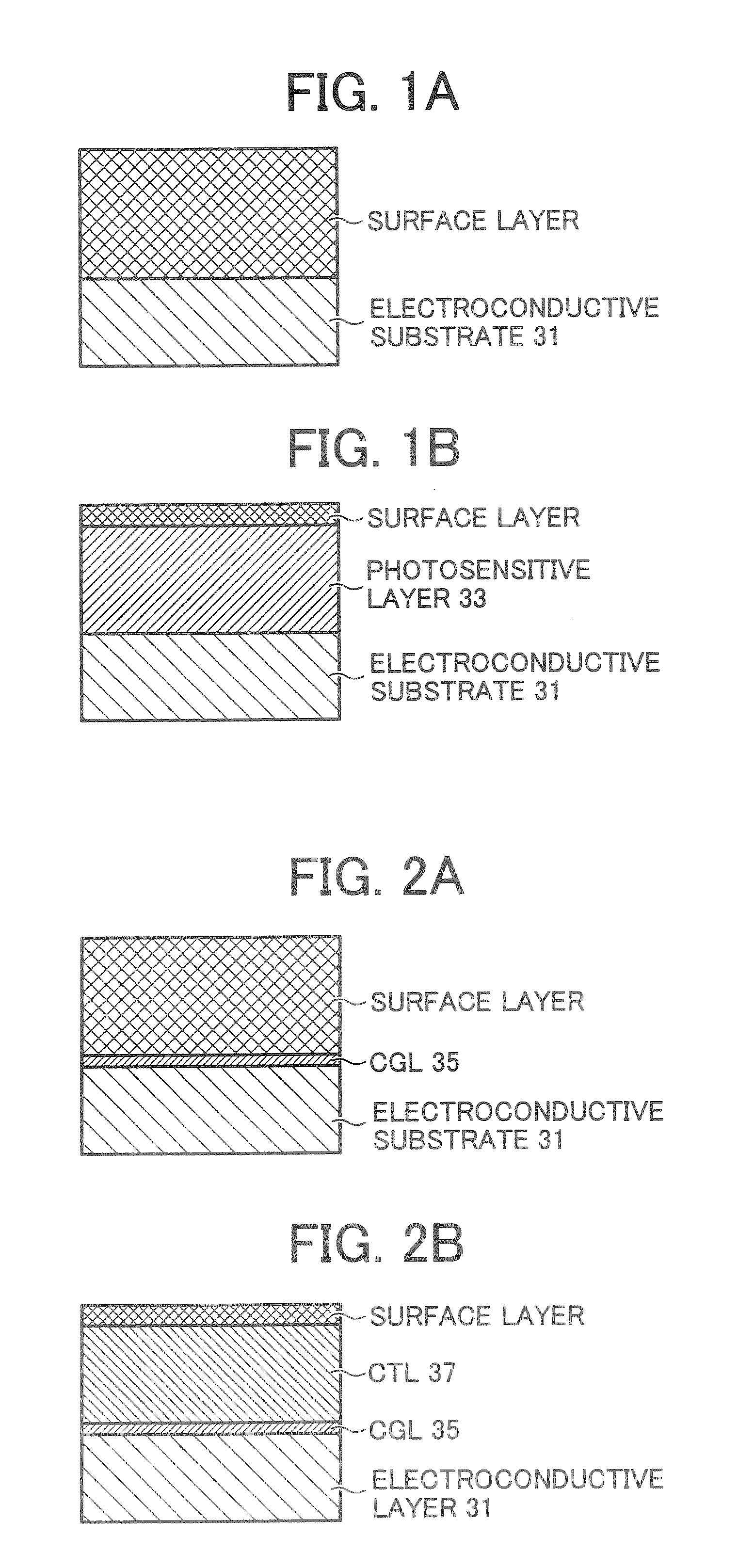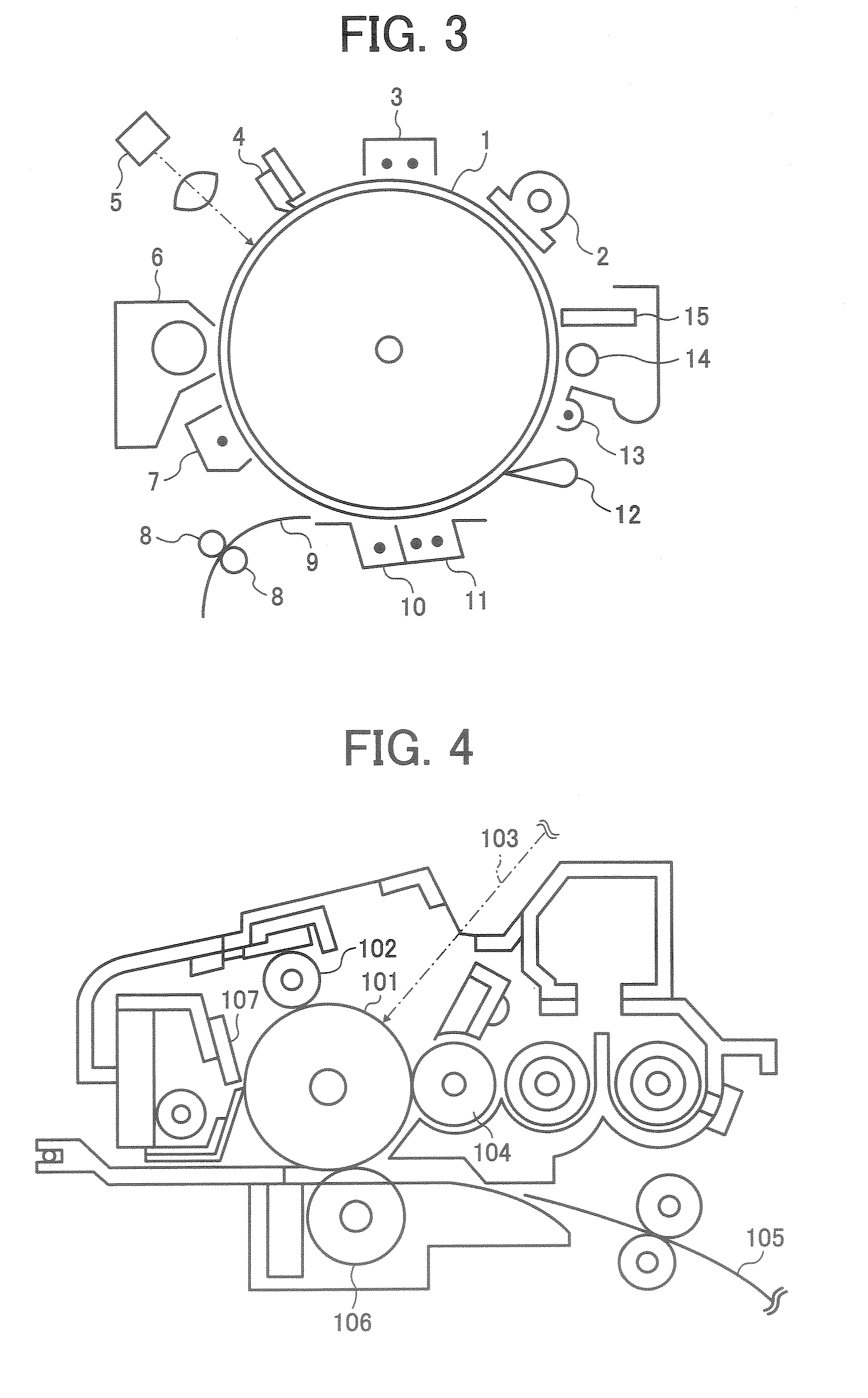Electrophotographic photoreceptor and method of preparing the photoreceptor, and image forming method, image forming apparatus and process cartridge therefor using the photoreceptor
a photoreceptor and electrophotoreceptor technology, applied in the field of electrophotoreceptor and photoreceptor preparation method, can solve the problems of abnormal images, mechanical ablation of organic photoreceptors, and deterioration of image density and background fouling, and achieve stable electrical properties, good durability, and high-quality images.
- Summary
- Abstract
- Description
- Claims
- Application Information
AI Technical Summary
Benefits of technology
Problems solved by technology
Method used
Image
Examples
example 1
[0200] An undercoat coating liquid, a charge generation coating liquid and charge transport coating liquid, which have the following formulations, are coated and dried in this order on an aluminum cylinder having a diameter of 30 mm to form an undercoat layer 3.0 μm thick, a charge generation layer 0.2 μm thick, a charge transport layer 20 μm thick thereon. The charge transport layer is further coated with a crosslinked surface layer coating liquid having the following formulation by a spray coating method using a spray gun. The spray gun is FSA-G05 from Meiji Machine Co., Ltd and the spray pressure is 0.2 Mpa. A distance between the spray nozzle and the CCL is 2 cm. After spraying, the coating liquid is dried by heating at 80° C. for 5 min, irradiated with a UP lamp system from Ushio, Inc. for 120 sec, and further dried at 130° C. for 15 min to form a crosslinked surface layer 8 μm thick. A shelf drier HPS-222 from Tabai Espec Corp. is used as the heating drier. A gas chromatograph...
example 2
[0205] The procedure for preparation of the electrophotographic photoreceptor in Example 1 is repeated to prepare an electrophotographic photoreceptor except for changing the distance between the spray nozzle and the CTL to 5 cm to form a crosslinked surface layer.
example 3
[0206] The procedure for preparation of the electrophotographic photoreceptor in Example 1 is repeated to prepare an electrophotographic photoreceptor except for replacing the monofunctional radical polymerizable compound having a charge transport structure in the crosslinked surface layer coating liquid with the above-exemplified compound No. 150 having a molecular weight of 298.
PUM
| Property | Measurement | Unit |
|---|---|---|
| density | aaaaa | aaaaa |
| temperature | aaaaa | aaaaa |
| temperature | aaaaa | aaaaa |
Abstract
Description
Claims
Application Information
 Login to View More
Login to View More - R&D
- Intellectual Property
- Life Sciences
- Materials
- Tech Scout
- Unparalleled Data Quality
- Higher Quality Content
- 60% Fewer Hallucinations
Browse by: Latest US Patents, China's latest patents, Technical Efficacy Thesaurus, Application Domain, Technology Topic, Popular Technical Reports.
© 2025 PatSnap. All rights reserved.Legal|Privacy policy|Modern Slavery Act Transparency Statement|Sitemap|About US| Contact US: help@patsnap.com



